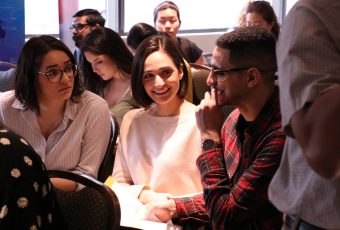Sydney Biological Sciences research the dingo
The dingo has been definitively classified as a distinct Australian animal thanks to new research led by the University of Sydney.
The research, which sheds new light on the defining physical characteristics of the dingo, also resurrects the species name Canis dingo, first published by German naturalist Friedrich Meyer in 1793.

The findings have just been published in the Journal of Zoology. Researchers from the University of NSW and University of Western Sydney also participated in the research.
The confusion over whether or not the dingo is a distinct species partly originates from the scientific classification of the Australian dingo, which was based on a simple drawing and description in the journal of Australia’s first governor, Arthur Phillip, without reference to a physical specimen.
To find a specimen of a dingo unlikely to have cross-bred with domestic dogs, the researchers searched museum collections in Europe, Australia and America that contained specimens known or likely to pre-date 1900, including those from archaeological sites.
“Examining the sixty-nine skull specimens and six skin specimens made available has enabled us to create a benchmark description of the dingo. Now any wild canid—dingo, dog, or hybrid of the two—can be judged against that classification,” said Dr Mathew Crowther, lead author of the study from the University of Sydney School of Biological Sciences.
“We can also conclusively say that the dingo is a distinctive Australian wild canid or member of the dog family in its own right, separate from dogs and wolves. The appropriate scientific classification is Canis dingo, as they appear not to be descended from wolves, are distinct from dogs and are not a subspecies.”
The physical features that define a dingo are a relatively broad head with a long snout, as well as erect ears and a bushy tail.
“Distinguishing dingoes from their hybrids (cross-breeds) with feral dogs is a practical concern. Current policies in parts of Australia support the conservation of dingoes but the extermination of ‘dingo-dogs,’ which are considered a major pest because they kill livestock,” said Dr Crowther.
Mike Letnic, a co-author on the paper from the University of NSW, said, “Many Australians like to think that dingoes are always yellow and that animals with any other colouration are not dingoes. This is untrue.
“One of the our insights is that coat colour does not define an animal as a dingo, dog or a hybrid. We found that dingoes can be tan, dark, black and tan, white, or can have the sable coloration typical of German shepherd dogs.”
Australia’s largest land predator, dingoes have an important role in conservation through their regulation of species such as and kangaroos, wallabies and invasive red foxes. A sounder understanding of dingo numbers, based on this clearer identification, will help our understanding of their role in biodiversity.
Dingoes were introduced to Australia around three to five thousand years ago, with genetic evidence suggesting they originated from East Asian domestic dogs. They bred in isolation until the arrival of domestic dogs after European settlement.
“That made distinguishing dingoes from dogs problematic, as the DNA tests and analyses of their physical structure were based on dingoes whose ancestry was not known. They were either captive animals or wild animals of uncertain ancestry,” said Dr Crowther.
University of Sydney School of Biological Sciences
The School of Biological Sciences has more than 30 academic staff members who are active in teaching, research, and have outstanding international reputations. The interests of the academic staff span molecular biology, genetics, cell biology, physiology, behaviour, biodiversity, ecology and evolution of Australian plants and animals, and student-learning in biology. The practical applications of this expertise include conservation and management of natural resources, biotechnology, bioinformatics, disease control, and teaching and learning procedures and resources.
*

































Ask A Question
Ask us about your program of interest, or if you have a question about our services.
CONTACT US TODAY